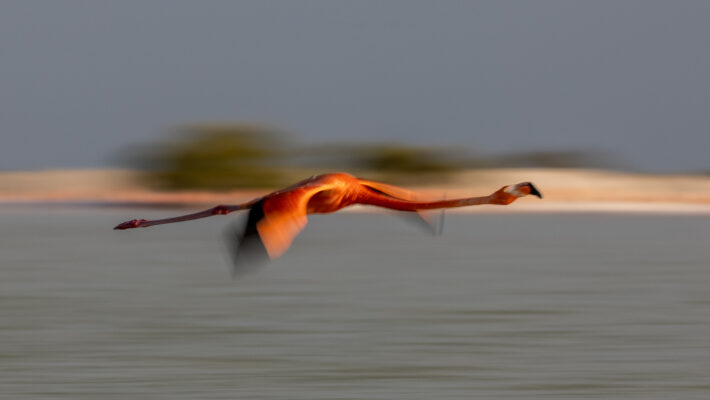
Flamingos are one bird we always want to photograph because they meet our criteria for favorite subjects – they are big, slow and colorful. And they are hard to photograph – it seems like whenever they get within a 100 feet of you, they move away. Consequently we have chased Flamingos all over the world, from Patagonia to Africa
[ngg src=”galleries” ids=”18,19″ exclusions=”55,56,57,58″ display=”basic_thumbnail”] And while we found them, most often they are either very few of them, too far away to get good photographs, and/or in poor light
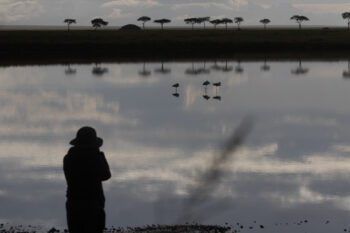
This they remained high on our bucket list. So we were very excited when Catherine read in the Wall Street Journal (about the last place you would expect to find wildlife photography opportunities) about the flamingos in Yucatan Peninsula. We did some research and found a large colony that frequented the Ria Lagartos Biosphere Reserve, which is at the Northern end of the Yucatan Peninsula, and we found a local photography guide who could get us to them in good light.
We reviewed the science which still said that physical distancing, being outdoors and wearing masks when indoors only enhanced the protection we got from our two vaccine shots. So ff we went.
We flew to Cancun and followed the Ruta Flamingo, a 60 mile road from mid peninsula to the Gulf of Mexico and Rio Lagartos where our flamingos resided.
[ngg src=”galleries” ids=”17″ exclusions=”51,52″ display=”basic_thumbnail” thumbnail_width=”375″]
When we arrived they were as advertised, in large numbers, reasonably close and in good light.
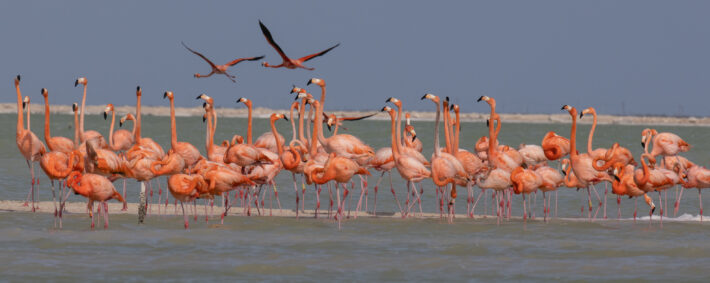
These are American Flamingos and from the name, you would expect to see them in the US, but there are only a few in Florida. They are mostly found in the Caribbean and thus are also called Caribbean Flamingos. They are mostly noted for their dark pink coloring. This compares other flamingo species who are more pale pink. The hot pink gives rise to their third name – the pink flamingo – that you see below (The color is right out of the camera).
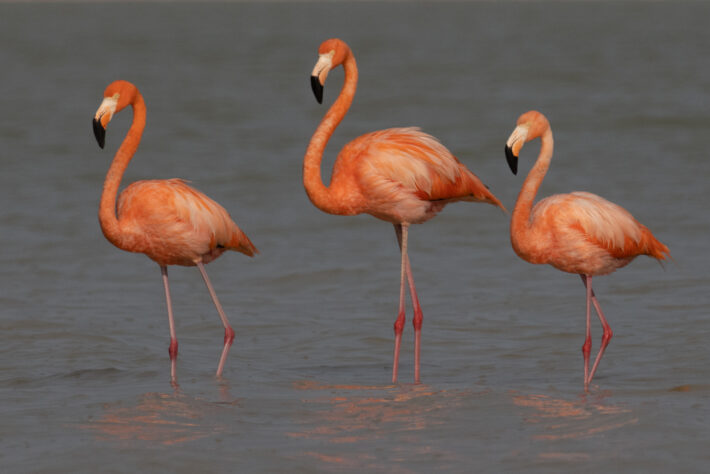
Since it was spring time, there was a lot of courting going and a lot of conflict between the birds, though it was basically nonviolent and nobody gets physically hurt, though a few feelings were hurt. Sometimes it was a male fending off a rival
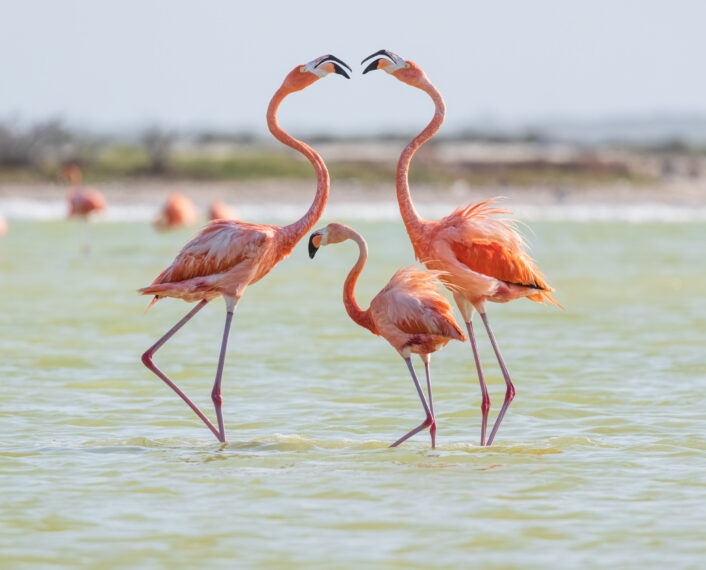
or two couples arguing:
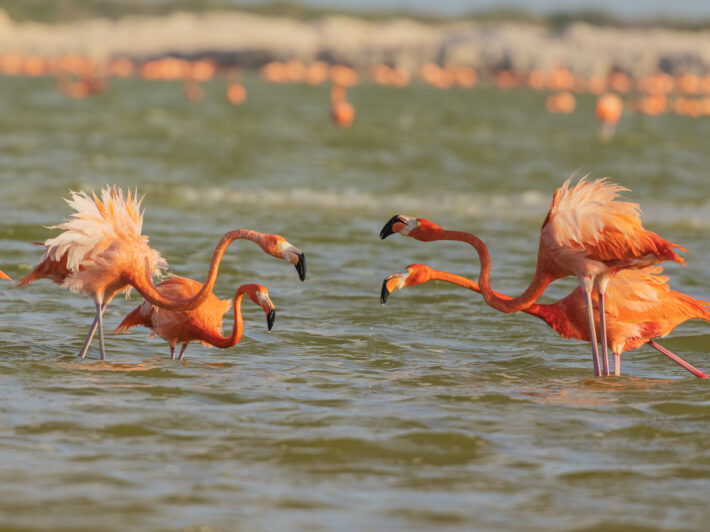
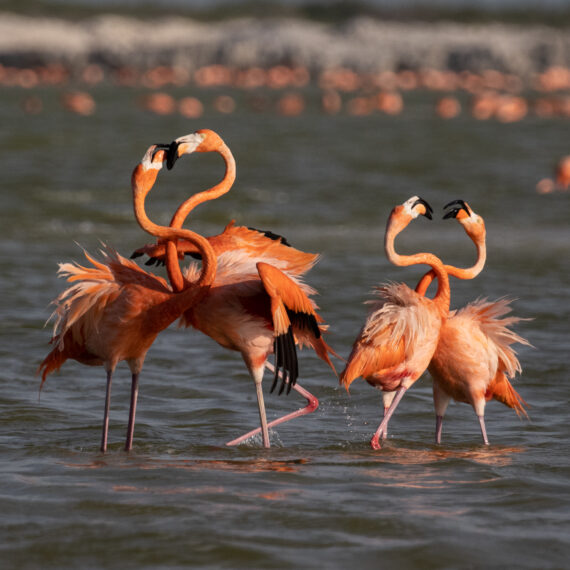
The photo opportunities were so good that after our first session Catherine said she could go home then and be happy. But we stayed on for 3 more days and got more and better shots.
One of more interesting behaviors is their take off when they appear to be walking on water. To build up some speed they take a short run up, even when they’re in the water. Flamingos can “run on water” because they have webbing in between their three toes.
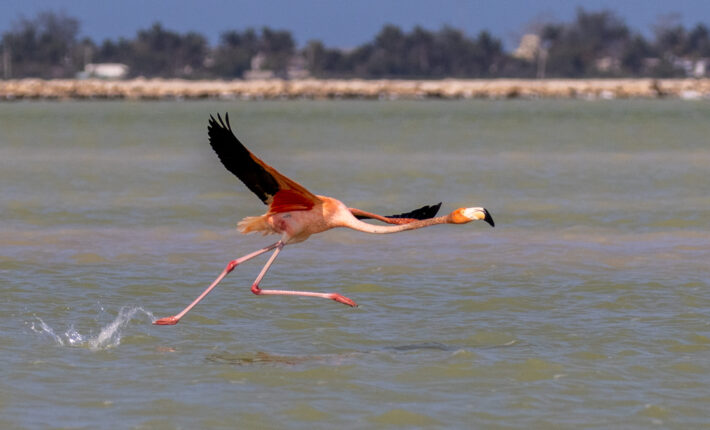
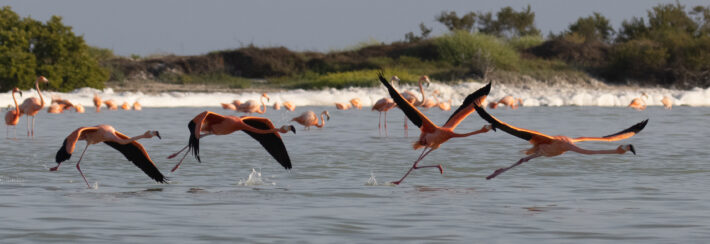
We saw so other birds as well like this brown pelican
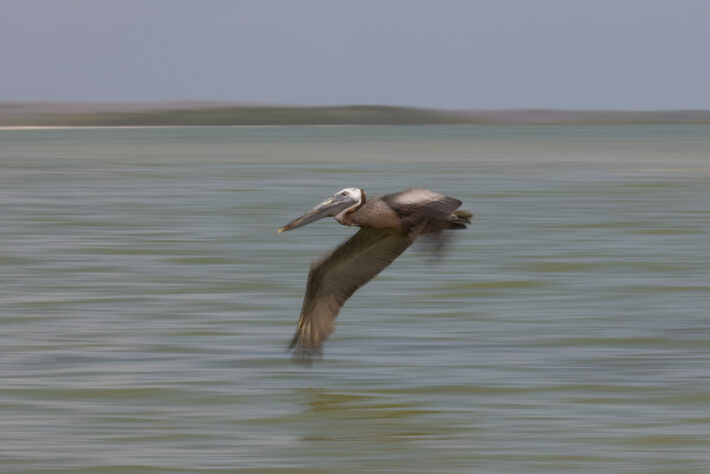
Here’s a short video of the flamingos in action
It was a short but successful trip and while I suspect we will photograph flamingos again, they are no longer near the top of our bucket list. It was home for a few days, then on to find out next target, red foxes. See our report here.